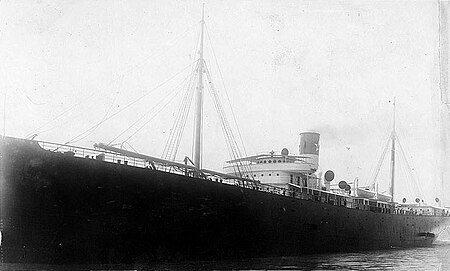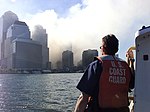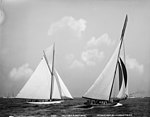SS El Sol

SS El Sol was a cargo ship built in 1910 for the Morgan Line, a subsidiary of the Southern Pacific Company. During World War I, she was known as USAT El Sol in service with the United States Army and as USS El Sol (ID-4505) in service with the United States Navy. At the end of war, she reverted to her original name of SS El Sol. SS El Sol was one of four sister ships that carried cargo and a limited number of passengers for the Morgan Line. She was acquired by the U.S. Army after the United States entered World War I in April 1917, and converted to carry horses and mules to France. In August 1918, the ship was transferred to the U.S. Navy and continued transporting animals through the end of the war. El Sol returned to the Morgan Line in 1919 and sailed with them until March 1927, when she sank in New York Harbor after colliding with Sac City of the American Diamond Lines. A portion of the ship's cargo was salvaged but the ship was scrapped later in the year.
Excerpt from the Wikipedia article SS El Sol (License: CC BY-SA 3.0, Authors, Images).SS El Sol
New York Manhattan
Geographical coordinates (GPS) Address Nearby Places Show on map
Geographical coordinates (GPS)
| Latitude | Longitude |
|---|---|
| N 40.683111 ° | E -74.044075 ° |
Address
07302 New York, Manhattan
New York, United States
Open on Google Maps










